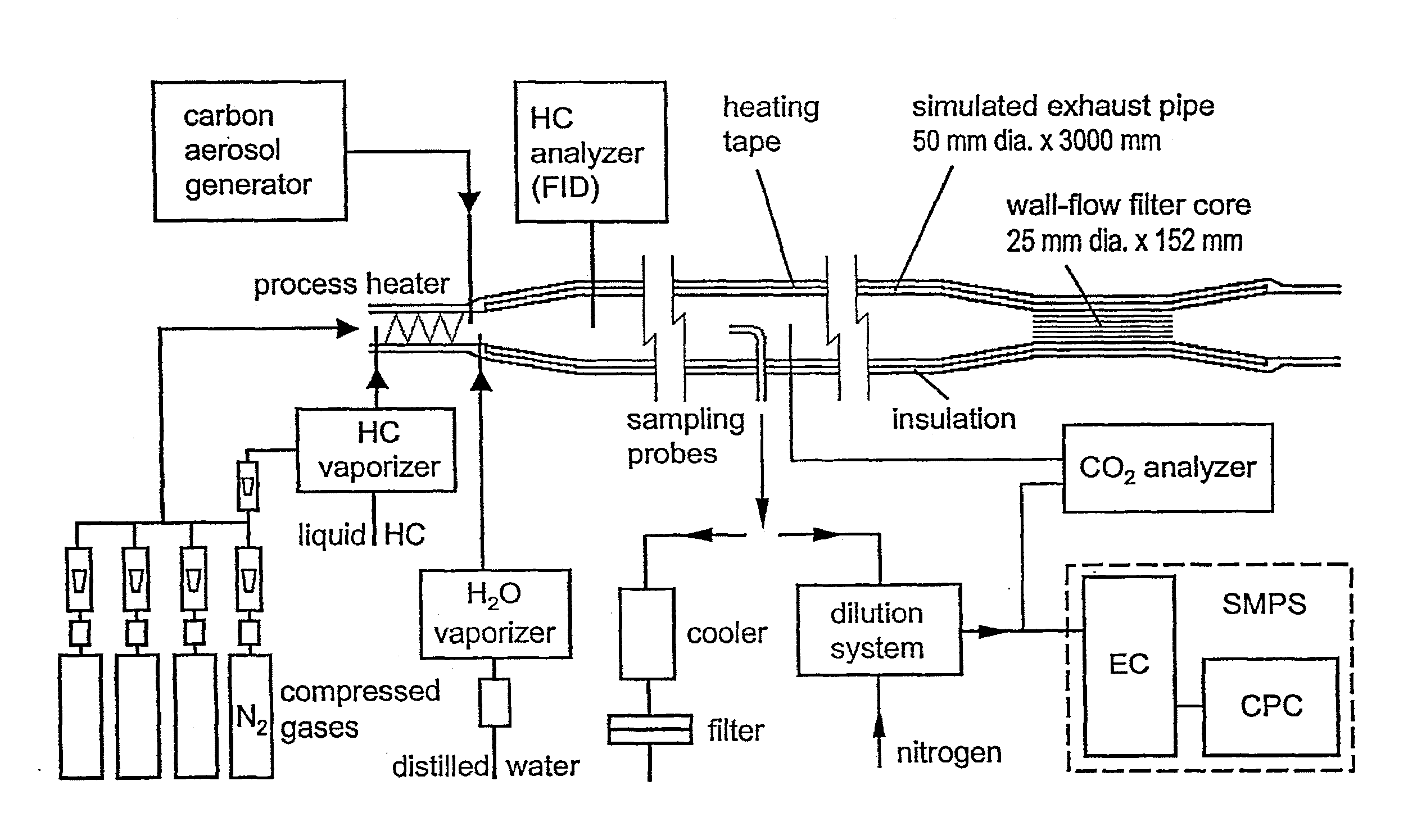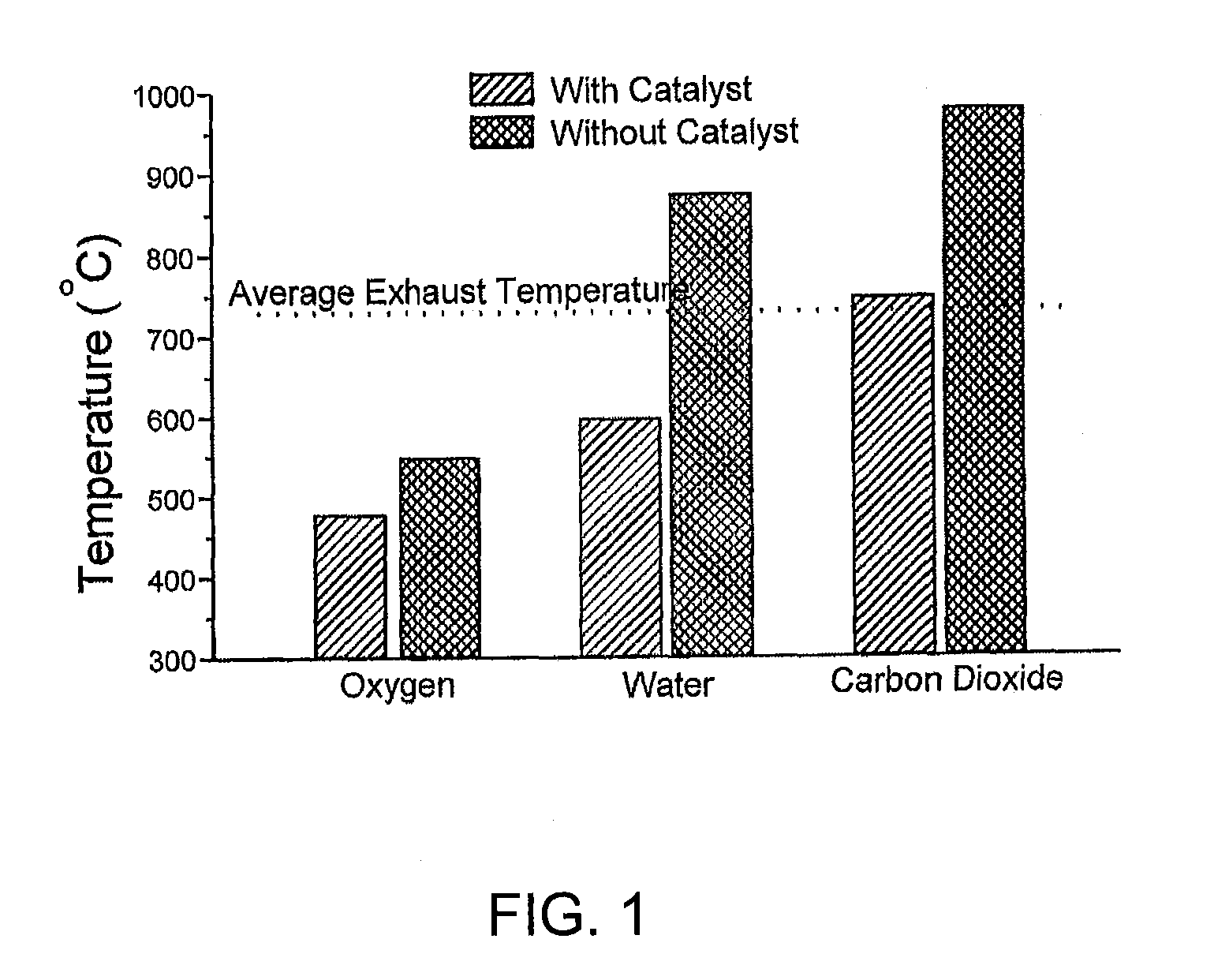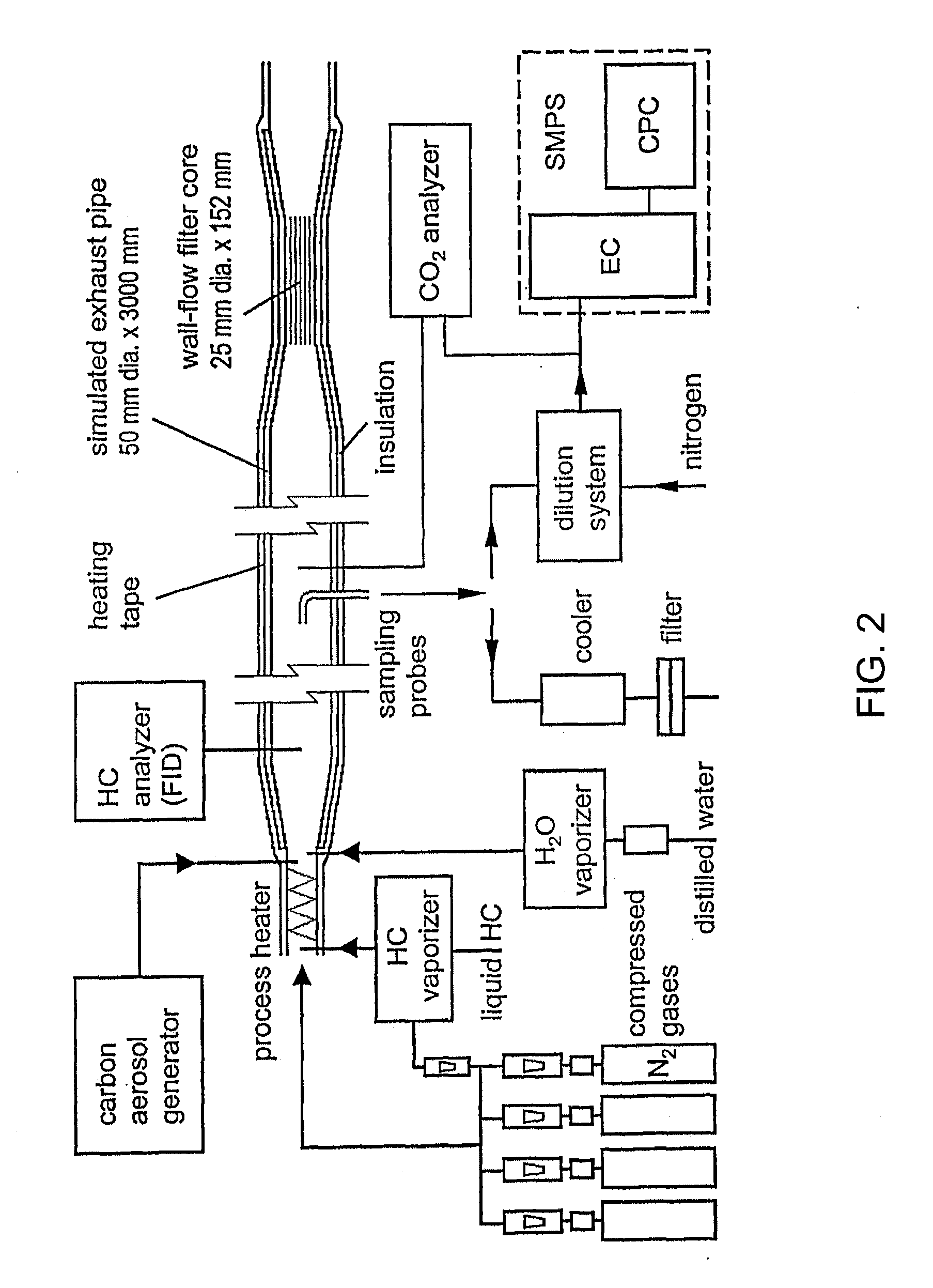Gasoline engine with an exhaust system for combusting particulate matter
a technology of exhaust system and gasoline engine, which is applied in the direction of electric supply techniques, physical/chemical process catalysts, separation processes, etc., can solve the problems of pm, health problems, and more hazardous, and achieve the effect of minimal impact on the overall efficiency of the vehicle and low power consumption
- Summary
- Abstract
- Description
- Claims
- Application Information
AI Technical Summary
Benefits of technology
Problems solved by technology
Method used
Image
Examples
example 1
Catalyst Preparation
[0042]A 10 wt % K / Al2O3, 10 wt % K / CeO2 and 10 wt % K / ZrO2 (as the elemental alkali metal based on the total weight of the catalyst) was prepared by wet impregnation. In each case the impregnation medium was an aqueous solution of KNO3. A mixture of the correct amounts of the support and impregnation solution was heated to evaporate the water and the material was calcined at 500° C. for 2 hours. Three alumina supports were used: alpha-, theta- and gamma-. We understand that the alkali metal is present as K2O in each catalyst, although some residual KNO3 may be present post-calcination.
example 2
Catalyst Ageing
[0043]Pelletised catalysts of Example 1 were aged in a simulated stoichiometric gasoline exhaust gas mixture of nitrogen, water, carbon monoxide, hydrogen, oxygen, sulphur dioxide at 850° C. for 2 hours and 16 hours.
example 3
Preparation of Catalyst / Particulate Matter Samples
[0044]Fresh catalyst of Example 1 and aged catalyst from Example 2 were each mixed with about 30-40% w / w carbonaceous PM (BP2000—high surface area graphite, a simulant for gasoline exhaust PM) lightly in a mortar and pestle to ensure thorough mixing. Light mixing was employed in order to simulate real conditions in an exhaust system in which the gasoline PM would loosely contact a trap device including a catalyst. Thus heavy grinding, which would promote too tight a contact between the PM and the trap, was avoided.
PUM
| Property | Measurement | Unit |
|---|---|---|
| temperatures | aaaaa | aaaaa |
| temperatures | aaaaa | aaaaa |
| size | aaaaa | aaaaa |
Abstract
Description
Claims
Application Information
 Login to View More
Login to View More - Generate Ideas
- Intellectual Property
- Life Sciences
- Materials
- Tech Scout
- Unparalleled Data Quality
- Higher Quality Content
- 60% Fewer Hallucinations
Browse by: Latest US Patents, China's latest patents, Technical Efficacy Thesaurus, Application Domain, Technology Topic, Popular Technical Reports.
© 2025 PatSnap. All rights reserved.Legal|Privacy policy|Modern Slavery Act Transparency Statement|Sitemap|About US| Contact US: help@patsnap.com



